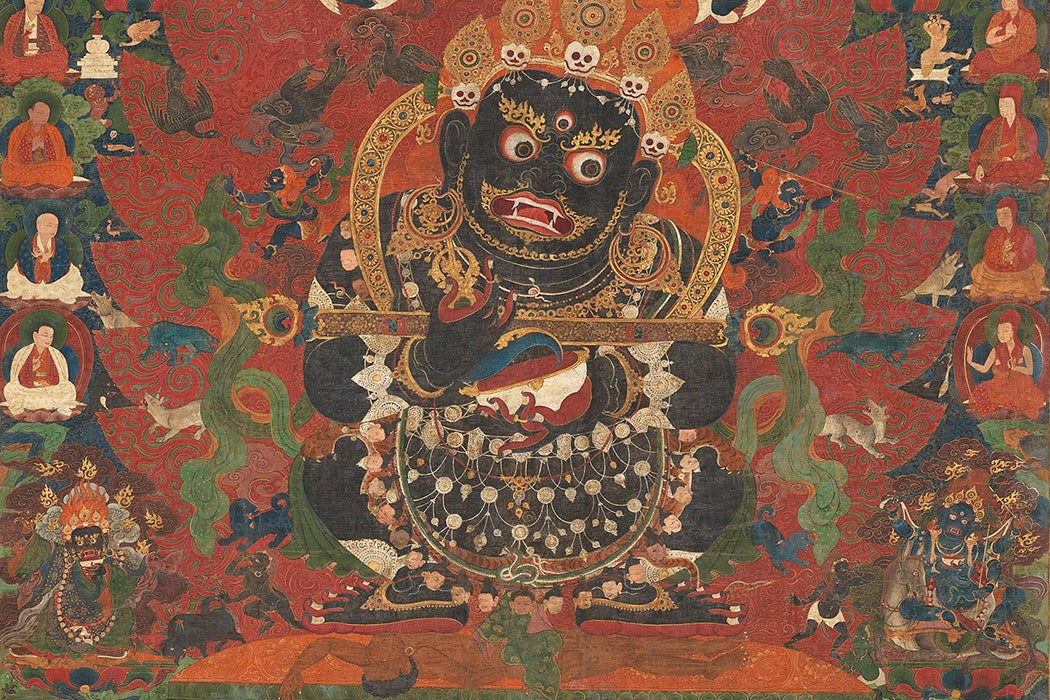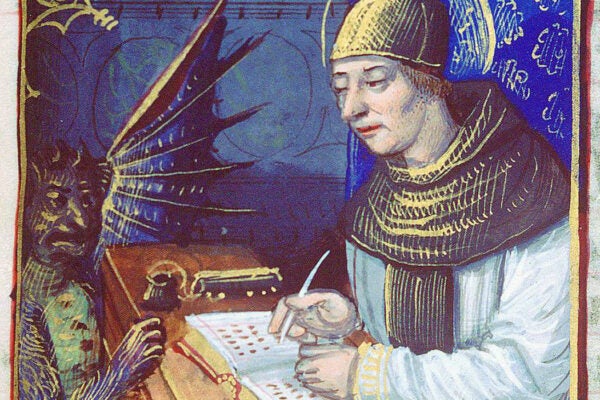Like nearly all societies, nations of Buddhists sometimes go to war. Yet the first precept of the religion calls on its adherents to avoid killing. Religion scholar Iain Sinclair examines this apparent paradox by looking at Sanskrit texts from the Vajrayāna, or tantric, tradition written in India between the sixth and twelfth centuries.
Starting in the fourth century, Sinclair writes, Buddhists increasingly incorporated traditional magic practices such as using incantations, mandalas, or talismans to achieve desired outcomes, including warding off danger. One danger that wandering monks often faced was crossing paths with an army. So, some rituals promised protection from soldiers. Others offered support to kings, who had the power to protect or destroy Buddhist institutions.
However, even when invoking magic in support of one side in a war, Vajrayāna tactics were often not directly violent. For example, they might call on the “Great Black” protector Mahākāla or the war deity Marici, who—despite being frequently depicted with eight arms holding various weapons—was typically asked to make a person invisible to their enemies. Other types of magic aimed to stun or scatter an opposing army, or to cause arguments within its ranks.
Sinclair describes one text that called for the use of an image of the bodhisattva Mañjuśrī, who wields a sword symbolizing insight, to cause enemies to flee. Another proposed that a tantric master should ride an elephant into an enemy camp, naked and holding a skull bowl full of “excreta, phlegm, and so on,” which he would drink and then spit out at the enemy, causing men and horses to faint.
“The use of substances deemed highly polluting in Indian society situates these techniques in the transgressive tantric tradition,” Sinclair writes. “Nonetheless, the emphasis is still on repulsion rather than the inflicting of harm.”
But, even when a magical tactic didn’t directly harm anyone, it might cause karmically dubious consequences, such as leaving an opposing army vulnerable to disease or starvation. In other cases, Vajrayāna war magic did aim to kill directly. Sinclair writes that this is in line with traditions that called for advanced tantric practitioners to invert Buddhist moral injunctions. These were secret teachings open only to advanced practitioners understood to have gained powers of judgment allowing them to transcend conventional norms.
Weekly Newsletter
The eleventh-century Kālacakra-tantra lays out a framework for acceptable warfare. It prophesies a violent barbarian invasion of the utopian kingdom of Shambhala—mirroring real-world attacks on Buddhist institutions that threatened to destroy the religion at that time. The text deplores war motivated by enmity or the desire for plunder. On the other hand, it recognizes defensive wars as acceptable under some circumstances.
Even when fighting an invader, the Kālacakra calls for Buddhist kings and warriors to unify physical warfare with inner battles against the fighter’s own wrong actions. For example, four divisions of the army correspond to the four boundless qualities of his enlightened nature.
Sinclair writes that this text creates a coherent vision of a just war: “one that was defensive, unavoidable, dispassionate, and minimally harmful, waged against a systemically violent opponent.”







